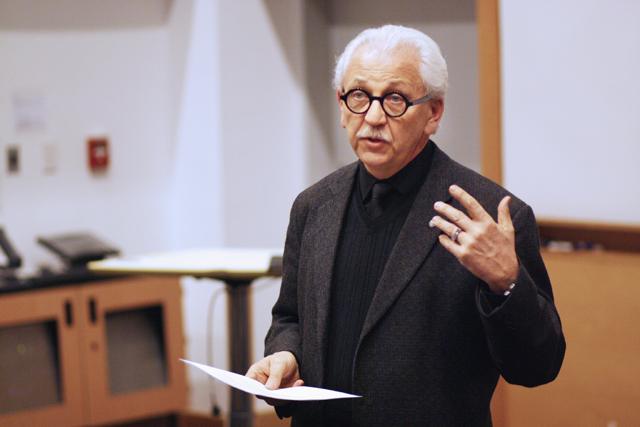In order to satisfy a 15 percent budget cut, the College of Design has decided to reduce section sizes and classes, and to use the existing resources more effectively.
The college will not, however, cut any faculty positions, its dean said at a Wednesday meeting in Kamphoefner Hall’s Burns Auditorium.
During his speech to a group of design students, College of Design Dean Marvin Malecha talked about the University’s budget reduction process and the proposed outcomes.
“Of the University’s proposed 15 percent budget cuts, 6 percent will be through reductions in facilities and other physical resources across the University, and the remaining 9 percent through academic reductions,” Malecha said
To meet the 9 percent reduction target, the college will have to cut $668,000 from its current budget. To that end, the college formulated a “budget reduction narrative” and submitted it to the College Administrative Council.
“We decided that we were not going to send in just recommendations for cutting, but also talk about the philosophy of the College of Design. This was a part of the narrative we sent to the administration,” Malecha said.
Malecha said the College Administrative Council has decided to protect all staff positions in order to assure proper support for students and academic services. Therefore, this budget proposal did not include any reductions for staff and faculty positions.
“Yes there will be fewer sections, fewer classes, fewer electives and visiting faculty. But this will also encourage us to make better use of our full-time faculty,” Malecha said. “For achieving this, we have outlined six general operating principles that will guide us towards the budget reduction process.”
”The first operating principle will be to establish an interdisciplinary studies core, which involves reinforcing the first-year experience. This will facilitate cross-college faculty appointments and assignments, as well as promote greater efficiency in assigning teaching resources,” Malecha said.
This essentially means that first-year students in different design disciplines will be sharing a lot of common courses.
Another major change is establishing a full summer semester for the college. Every student will be required to take at least one summer semester of coursework for graduation.
“It will help you to get through college faster, saving one or even two semesters if you’re fast-paced, and it also helps the college relieve pressure on facilities,” Malecha said.
The third change involves making international study a graduation requirement for all undergraduate design students. This will require students to complete a minimum of nine credit hours abroad, and can be met either through the Prague Institute or the Ghana Summer Study Abroad Program. This will help save the college money, as study abroad programs are self-funded, and also help relieve pressure on a reduced faculty body and limited facilities.
Malecha said studying abroad isn’t as bad as it sounds—out-of-state students would pay less while studying in Prague than they would at the University.
“Also, I don’t see any reason why anyone wouldn’t want to go to Prague,” Malecha said.
The fourth operating principle is to introduce compulsory distance education requirements, with each program requiring two distance education courses for graduation.
The only operating principle that requires cutting down on academic opportunities will be a reduction in low-enrollment courses and course duplication. This will include integrating different media labs and interdisciplinary studies and designating an IT lab that focuses on integrated instruction.
The final operating principle will see the faculty involved in greater shared responsibility and mobility.
“We will be initiating hiring practices that encourage broadened teaching practices. This will mean greater mobility and interdisciplinary utilization of faculty, which has been made necessary by the budget cuts,” Malecha said.








